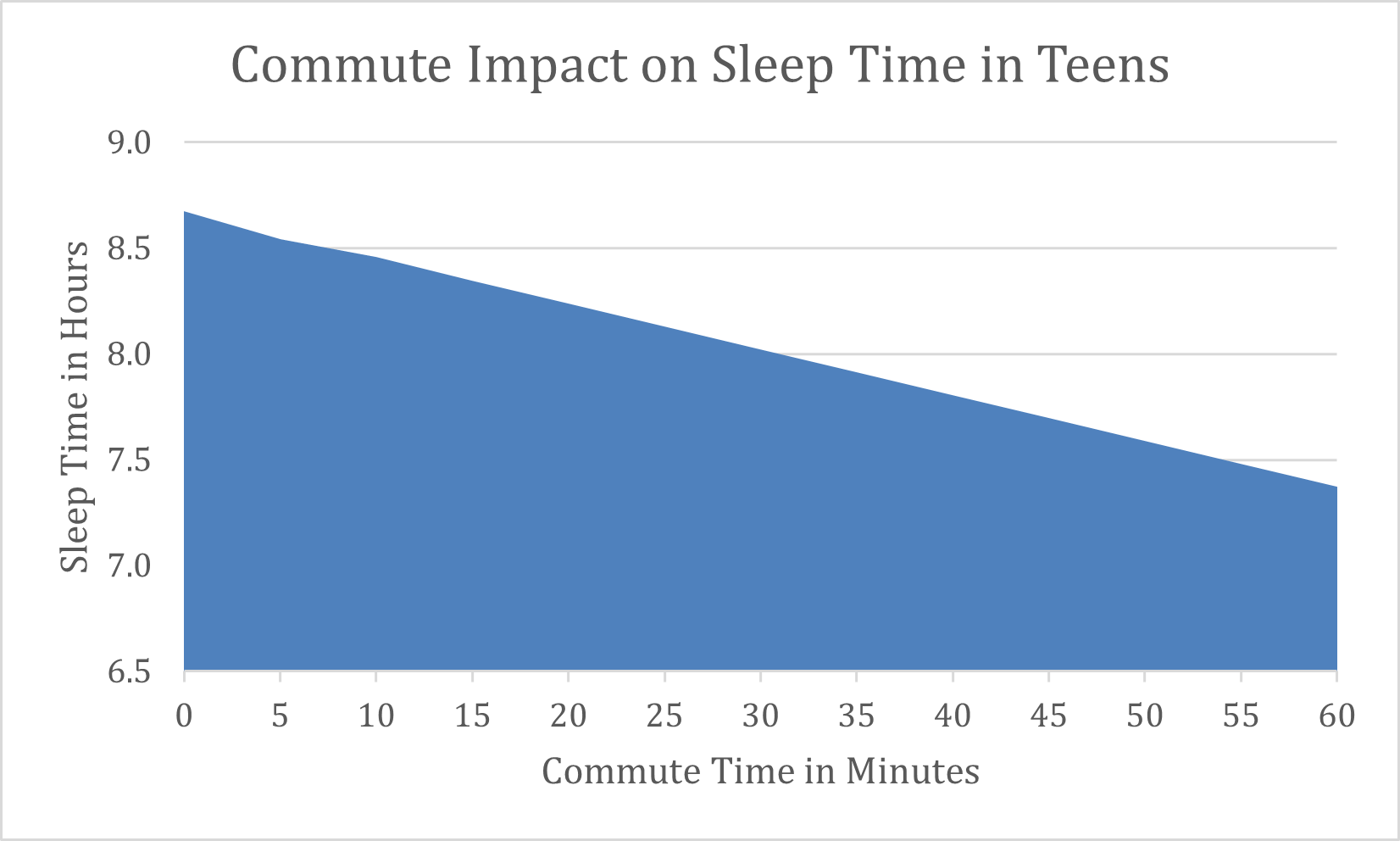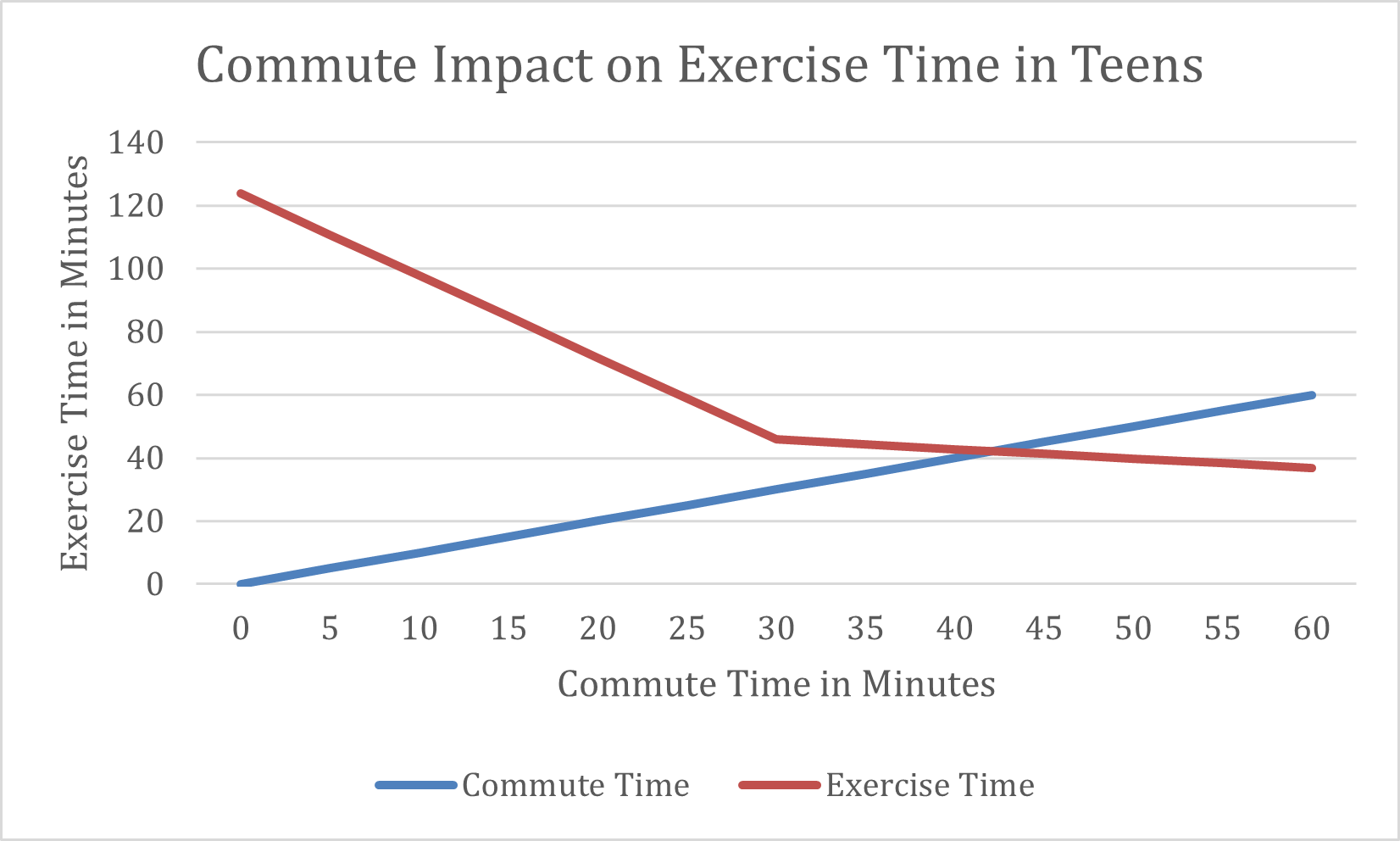Just like physical activity, sleep plays a crucial role in maintaining wellbeing. Over 30 years of cumulative research shows that multiple school-related factors are responsible for children getting inadequate sleep. Major culprits include:
- Early school start times
- Long commutes to school
- School-related stressors (academic and social)
Sleep-deprived children experience a range of problems, from chronic fatigue and daytime sleepiness to being late for school, and may exhibit difficulties with learning and memory.
Recently, researchers examined data from the American Time Use survey to see how teenagers’ school commute times affected their overall health and wellbeing. Data revealed that teens with long commutes to school slept fewer hours and engaged less in physical activity compared to their peers.

Regardless of the method of travel, the length of the morning commute to school comes off of the average sleep time at a rate of 2.6 minutes per minute spent commuting. Sleep time and school commute time have the most direct and absolute relationship of any two daily activities for teenagers. At a directly proportional rate, the longer they commute, the less they sleep. This means that increasing a student’s commute from 10 minutes to 30 minutes will decrease his or her sleep time by 26 minutes per day. Interestingly, time spent commuting passively, such as in a bus or car, has a serious impact on the amount of exercise a student gets up to about 30 minutes of commute time, after which it has a negligible impact. Each minute of commuting over 30 minutes also costs teenagers four minutes of time spent earning money at a job per day.

In 2021, an international study revealed the relationship between mode of school transport and children’s overall physical activity levels, after tracking more than 4,000 students aged 10‒13 for 2+ years. Unsurprisingly, children who used active transport (walking, biking/ bicycling) to get to school throughout the study exhibited the highest levels of overall physical activity and those who used passive transportation (car, bus) exhibited the lowest.
The really interesting finding, however, was that children who switched from passive transport to actively walking or biking exhibited a big jump in unrelated physical activity levels as well. In other words, the activity of walking or biking to school “primed” these children to engage in other physical activities throughout the day.
It’s no secret that greater physical health and fitness helps people perform better. A 2017 study in the journal Pediatrics reviewed research on over 10,000 school children and concluded that increasing daily levels of physical activity yielded significant academic benefits, including improved focus and higher math scores. Similar results were reported by another review of 39 different studies.
Given that most modern urban and rural environments make it next to impossible for children to walk or ride to school by themselves, finding workable solutions that are child-friendly, pro-health, and economically sustainable is crucial.
Children benefit from school bus routes that are not too long in duration, leaving them time for exercise and other activities outside of school. How long is too long? Research indicates that bus rides that are 45 minutes long will reduce students’ sleep times by a full hour per day, which can have detrimental effects on their learning and memory, as well as impact the amount of physical activity they may be able to get after school, their ability to join an athletic team, or their ability to work at a job.
For school transportation supervisors, this research has several implications. First, it reinforces efforts to keep in-district bus runs to 30 minutes or less. 30 minute bus runs have become the norm, given the common staggering of school start times by 30 minutes, (e.g., 8:00, 8:30 and 9:00). Secondly, this research provides support for the contention made by many transportation supervisors for a long time that more students, especially older students, should be expected to walk a reasonable distance to their bus stop. Walking to a bus stop “primes” the student for later healthy activity. Fewer home bus stops and more, centralized, neighborhood stops should also reduce travel time and related operational costs.
We are here to help!
From a rapid review of your operation to ongoing assistance, we are here to help you succeed.


